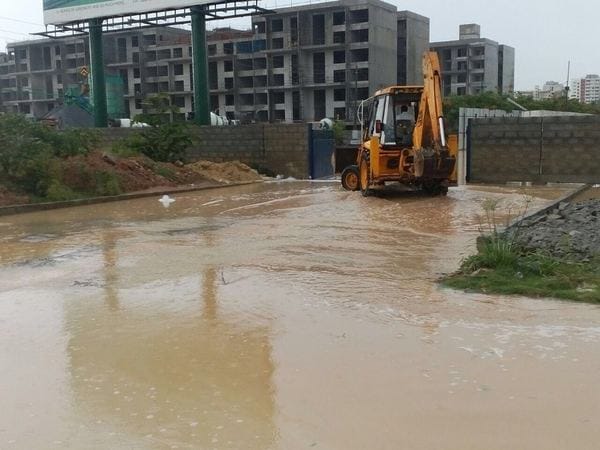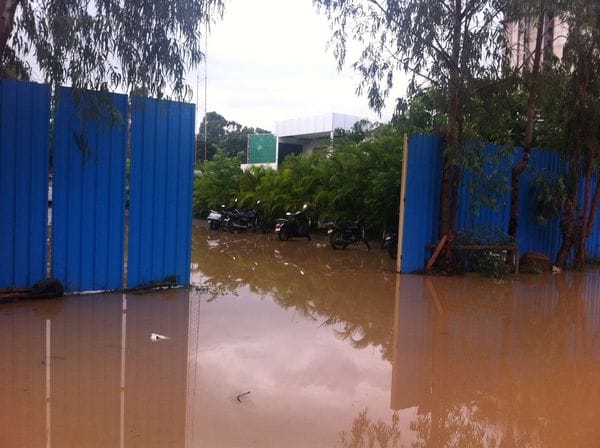When buildings come up in the catchment area of a lake, there’s bound to be flooding during the rains. Two major residential projects, Bren Imperia and Shriram Chirping Woods are coming up on on the sensitive valley zone between Kasavanahalli and Kaikondrahalli lakes. Citizen Matters had written about what was happening in the area.
-
Residents ask govt to save Kaikondrahalli, Kasavanahalli lake wetlands
-
Yet another construction threatens to dry up Kaikondrahalli lake
-
How construction debris is letting sewage enter Kaikondrahalli lake
Just a month ago, the National Green Tribunal had dismissed the petition against these projects. But the recent heavy rain in Bengaluru created floods, submerging the land where the projects are coming up.
A resident of Bellandur, shared these pictures of the area following the rains on May 31st.



Flooding at the premises of Shriram Chirping Woods construction following heavy rains.
Another post on the Kaikondrahalli lake pages says:
“(A)Large quantum of soil had to be dumped to make this land less marshy and more convenient for building. In the process, the land level was raised. Now the flow from Kasavanahalli to Kaikondarahalli is blocked.“